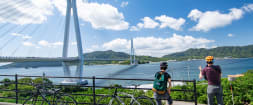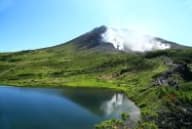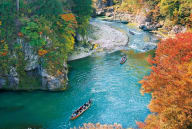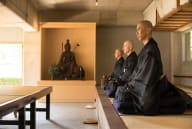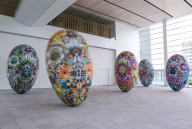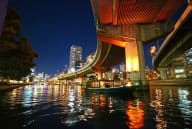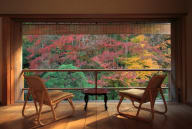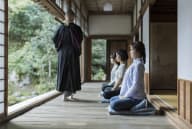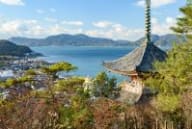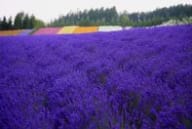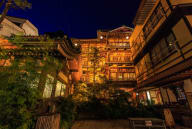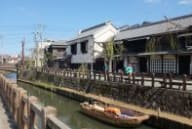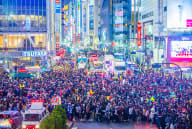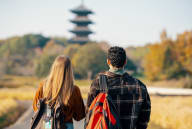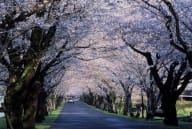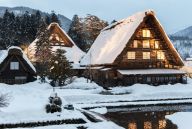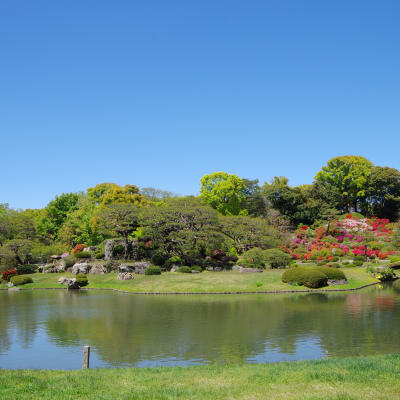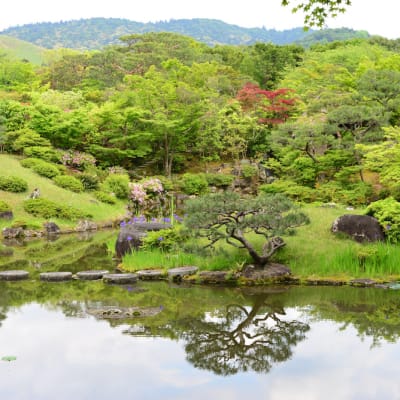Use the
Planning a Trip to Japan?
Share your travel photos with us by hashtagging your images with #visitjapanjp

Japanese gardens have long been inspired by the natural world. They are designed to distill nature’s essence, symbolizing entire landscapes within confined spaces. Rocks may represent distant mountains, gravel becomes flowing rivers, and moss mimics verdant valleys.
Today, these traditional concepts are finding new relevance in urban design. As cities around the world grapple with climate change and congestion, Japan offers unique models for Co-adaptation—the GREEN×EXPO 2027 subtheme that highlights how nature and cities can evolve together. Spanning temple gardens and feudal-era retreats to cutting-edge rooftop parks, Japan’s green spaces show how thoughtful design can improve our daily lives.
Discover the roots of Zen gardens in Kamakura

Kenchoji Temple, nestled in the ancient capital of Kamakura, is a serene escape steeped in history. Founded in 1253, it’s the oldest Zen training monastery in Japan, and continues to serve as a living center of Zen practice today.
One of the temple’s highlights is its historic garden, attributed to the first abbot Rankei Doryu. At its center lies a tranquil pond shaped like the Japanese character for “heart”. The garden exemplifies the principle of “borrowed scenery” by incorporating the surrounding landscape into its design.

Kenchoji once featured a classic dry landscape garden, where raked gravel, stones, and sand symbolized rivers and mountains. Though most of it no longer remains, you can still spot a striking remnant: a stone-crafted dry waterfall, evoking the presence of flowing water.
The grounds are also home to towering junipers, magnolias, and cherry trees that bloom in spring, and vibrant red and yellow foliage that draws visitors in autumn. On clear days, visitors can glimpse Mt. Fuji and Sagami Bay, adding a majestic backdrop to the meditative grounds.
Stroll like a lord through Edo-era elegance in Tokyo

During the Edo period (1603–1867), Japan’s daimyo lords, built exquisite gardens for leisure, diplomacy, and cultural refinement. These daimyo gardens reflected not only power and prestige but also a deep appreciation for nature and classical beauty.
One of the finest examples is Koishikawa Korakuen Gardens, located in the heart of modern-day Tokyo. Constructed in the early 1600s on the estate of the ruling Mito-Tokugawa family, the garden recreates idealized Chinese and Japanese landscapes in miniature.

Winding paths lead through groves of plum and cherry trees, across stone bridges, and around tranquil ponds. Among its most iconic features is the Full Moon Bridge, whose near-perfect circular reflection in the water creates the illusion of a full moon. Like many Japanese gardens built during the Edo period, Koishikawa Korakuen Gardens was designed as a space to contemplate and reconnect with nature.
Explore one of the first public gardens, Kairakuen

Located in Ibaraki Prefecture, Kairakuen ranks among the “Three Great Gardens of Japan.” What sets Kairakuen apart is its unique founding philosophy: It was created in 1842 by Tokugawa Nariaki, the local daimyo lord, not just for the elite, but as a place of enjoyment and relaxation for the public. Its name means “a garden for everyone’s pleasure,” making it a pioneering example of public space design.
Kairakuen is best known for its breathtaking grove of over 3,000 plum trees. From mid-February to late March, the garden bursts into a sea of pinks and whites, drawing crowds for the annual Mito Plum Blossom Festival.
Beyond plum blossoms, the garden features tranquil paths shaded by cedars and bamboos. Visitors can take in panoramic views of Lake Senba and Mt. Tsukuba from Kobuntei Pavilion, a beautifully restored wooden villa that once hosted poets and artists for cultural gatherings.
Distilling nature in miniature at Omiya Bonsai Village

Just north of Tokyo, Omiya Bonsai Village in Saitama is a haven for lovers of Japan’s iconic miniature trees. Bonsai is not just a horticultural technique; it’s a living art form and a philosophy. By cultivating trees in pots and tending to them over years, even decades, practitioners create miniature yet majestic expressions of nature.

Omiya Bonsai Village is home to around a dozen bonsai nurseries, where visitors can admire and purchase trees ranging from the freshly shaped to centuries-old masterpieces. It’s also home to the Omiya Bonsai Art Museum, the world’s first public museum dedicated to bonsai culture. The museum houses seasonal exhibits, historical woodblock prints, and tools used by generations of bonsai masters.
A great time to visit the village is early May, when the area hosts the Great Bonsai Festival, attracting growers and enthusiasts from across Japan.
Modern green spaces in the heart of a megacity

Amid the neon lights and high-rises of Tokyo, a new wave of green spaces is redefining what a garden can be. Blending function with beauty, these modern rooftop parks and terraces showcase how even the busiest city can make room for nature.
Miyashita Park is a rooftop park located in central Shibuya. It reopened in 2020 and stretches across the top of a multi-level shopping and hotel complex. Designed with urban resilience in mind, the park includes features like earthquake-proof infrastructure and barrier-free access. Sports courts, green lawns, and walking paths make it a favorite for both locals and visitors seeking a break from the crowds below. Just steps away, SHIBUYA SKY crowns the 47-story Shibuya Scramble Square. This open-air observation deck offers breathtaking views of Tokyo, including the famous Shibuya Scramble Crossing and even Mt. Fuji on clear days. A lawn in the center adds a soft, relaxing touch to the sleek glass-and-steel environment.

Just outside Tokyo Station is Tokyo Midtown Yaesu, another cutting-edge development that redefines urban space. This 45-story mixed-use complex includes offices, luxury retail, and even an elementary school. Its lush rooftop terrace brims with seasonal flowers and native shrubs, promoting relaxation and offering rare green views in one of Tokyo’s busiest districts.
Key takeaways
From Zen temples and bonsai villages to rooftop parks, the Kanto region is a living timeline of Japan’s relationship with nature. These green spaces preserve traditional aesthetics and adapt to contemporary urban life, reflecting the GREEN×EXPO 2027 subtheme of Co-adaptation, showing how nature and cities can evolve together. As we look ahead to global challenges like climate change and urban overcrowding, Japan’s approach to designing with nature offers a compelling vision for greener, more harmonious cities.


©Expo 2027














